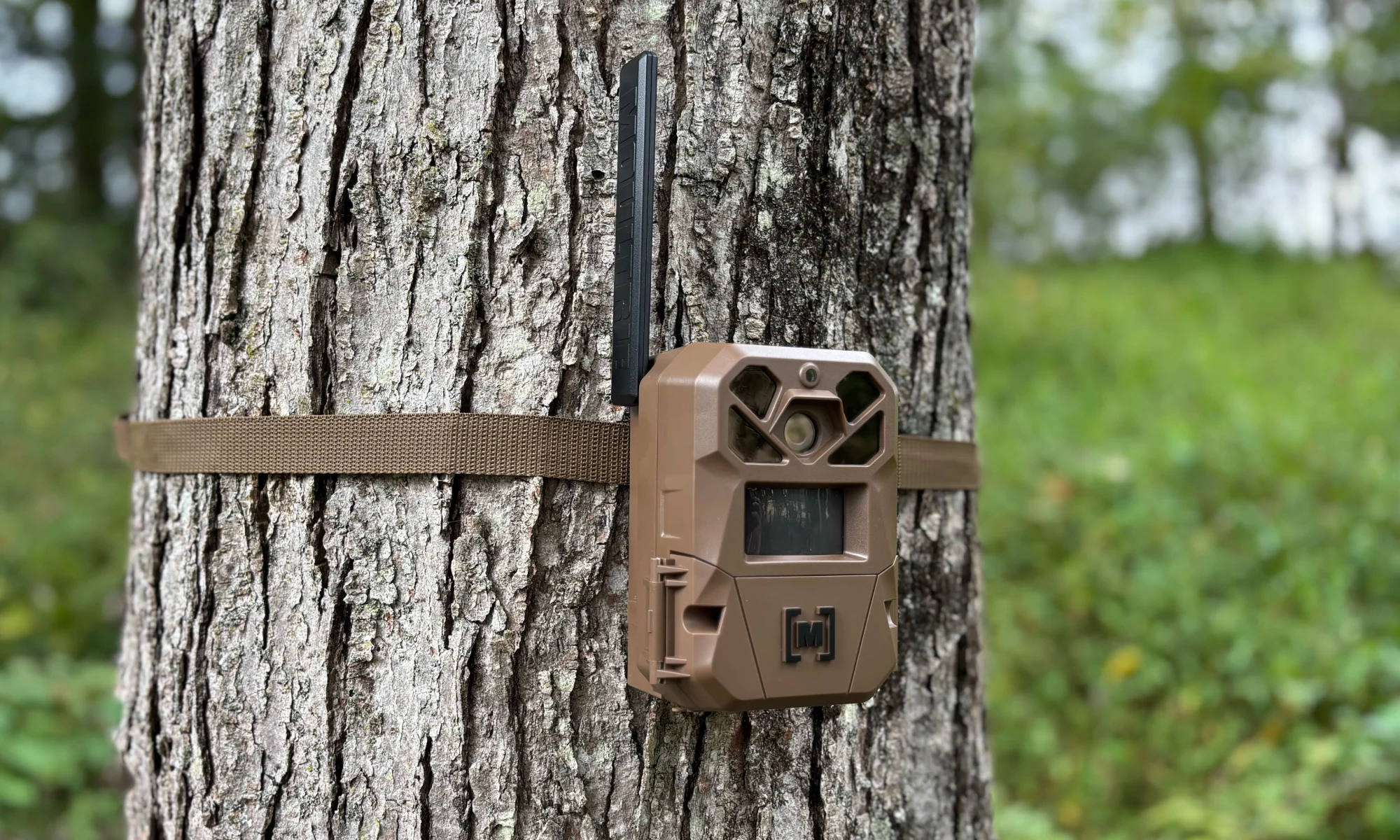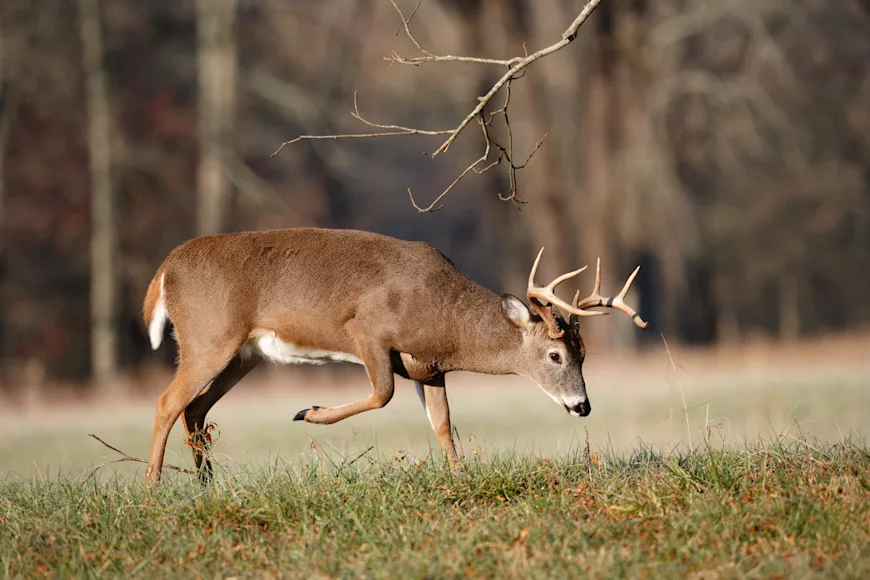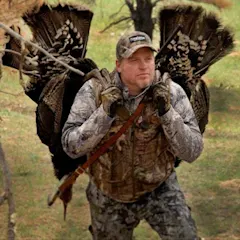On this very date three years ago, I snort-wheezed a nice 8-pointer to within steps of a subdominant buck decoy. He'd been working a field-edge scrape when I called to him. He lifted his head, stared for a bit, and then stomped clear across a clover field to face off with my fake. He was bristled up and ready to fight when my arrow hit home. I texted my buddy to tell him, and he said, "Well, I guess the rut has started."
Back in September, we revealed our picks for the seven Best Days of the 2025 Whitetail Rut, and the first day is coming up this weekend, on Saturday, October 25. Why that day? Because that, in our humble opinion, is when the rut will get started. In fact, go ahead and think of it as the opening weekend of the 2025 rut. You've been waiting a long time for this, so get your gear together, free up some time, and get out there. Here's what to look for and how to take advantage.
Rut Phase: Late Pre-Rut

With peak breeding only weeks away in most areas, bucks are already raring to go. Testosterone levels are high, and there may even be the faint scent of estrous in the air from the odd early-cycling doe. Most does are still a couple of weeks out, however, which leaves a bunch of antsy, frustrated bucks raking trees, pawing the ground, fighting amongst themselves, and generally spending more time on their feet during daylight, especially with the cooler temperatures of late October.
Scrape-making, in particular, should shift into overdrive right around the 25th. According to research, mature bucks will make or freshen a dozen or more scrapes a day during this rut phase, before they turn their attention to actively seeking and chasing does. What makes this phase so good is that while daylight buck activity is increasing by the day, most of it is still taking place in and around buck core areas. All of the info you've gathered up to this point—where certain bucks bed and feed and the patterns they follow—is still largely in play. It's a killer time to ambush a buck you know, before he starts running will nilly.
October 25 Morning Hunt Plan: Cut Off a Back-to-Bed Buck

All through the early season and into mid-October, bucks tend to hit the sack early—like before-dawn early and as-your-walking-in or climbing-up early. In most situations, this makes it risky to try to pull off a morning hunt without tipping off the buck you're after. But now that they are staring to inspect does and are obsessed with laying down and freshening sign, there's plenty to keep them busy and on their feet a later into the morning. So, all of a sudden, a morning hunt makes a lot more sense, and today is the day to take advantage. But you still have to be careful.
What you want to do, of course, is catch a buck as he moves from a primary food source in the morning to a bedding area nearby. Often, a buck will mark this path with a rub or scrape line, which can be unraveled ahead of time on a midday scouting session. You can probably think of several transition areas that fit this description off the top of your head. But that doesn't make them all good candidates. As you think of each spot, you should ask yourself three questions:
Can I get in without spooking deer on the main food source?
Can I get out without alerting a bedded buck?
And will the wind keep my scent away from the deer at all times?
This will probably eliminate most of your likely spots, but if there's one (or more) that checks all the boxes above, then go for it. Get up early, sneak in, and set up near the best buck sign between feed and bed, cheating a little toward the feed if possible. If it all works out, you be filling out a tag before the sun clears the tops of the trees.
October 25 Evening Hunt Plan: Watch a Scrape Line

There are two great spots to set up for an evening hunt today: a field-edge scrape line or a cluster of staging area scrapes. Which one you choose all depends on how the deer are behaving in your area. If bucks are still waltzing out into open ag fields or food plots well before dark, then go with the field edge. If, on the other hand, you experienced the typical October lull, and since then your best bucks seem to be staying in the woods right up until dusk or even dark, a staging area will be a much better bet.
Either way, the first step is identifying a prime feeding area that's attracting plenty of does. Then you need to do a little midday scouting ahead of time to find the freshest buck sign—whether that's a line of scrapes along a field edge or a cluster of fresh scrapes and rubs in a staging area just inside the woods.
If you go the staging-area route, it's likely that you'll have several such areas with fresh buck sign; you want to sit in the one that combines the best sign with a good wind. And if the wind and your setup are good enough that you're not too worried about bucks circling downwind, don't be afraid to tickle the rattling antlers now and then. Otherwise, wait for natural movement and call only if you see a buck that's not already headed your way.
As for the field-edge option, it can be a high-odds play if you're lucky enough that good bucks are still hitting fields and plots well before dark. Oftentimes, the first thing a buck will do when entering a field now, before feeding or inspecting does, is walk right down an edge of the field, hitting one scrape after another. If you are also lucky enough that the wind is good along that edge, it can be as simple as getting in early, hanging a stand, and waiting for a buck to walk by.
More often, however, I've found that in order to have a good steady wind that won't blow toward deer as they enter the field or once they're in it, you have to set up off the main action and lure bucks over by calling or with a combination of calling and a decoy. I've had great luck by staking out a subdominant buck decoy and then snort-wheezing to pull him over. A lot of hunters think of a snort-wheeze as an ultra-aggressive, peak-rut call, but it can work wonders now. Even without a decoy, I've called bucks clear across a field and into bow range. It also happens to be one of the coolest ways to arrow a buck, so give it a shot if the wind forces you to set up off the sign.
Hot Tip: Watch Those Cell-Cam Pics for Daylight Scrape Visits

October 25th should be right in the heart of what we've at F&S have come to call Scrape Week, that roughly week-long period prior to seeking and chasing when bucks get a little crazy about opening and freshening scrapes. A lot of hunters are leery about sitting over scrapes, noting that most visits happen at night. That's true. Scrapes can be pay dirt or fool's gold, depending on when bucks are hitting them. But if there is ever a time when they can be pay dirt, it's now, and we have the perfect tool to tip us off to daylight visits.
Odds are, you've already got some cell cams pointed at hot scrapes, mock or real. Pay close attention to your those pics leading up to this weekend, looking for bucks hitting certain scrapes or scrape lines during the day. That will tell you when and where to employ the tactics above.
Related: The Best Cellular Trail Cameras of 2025, Expert Tested


